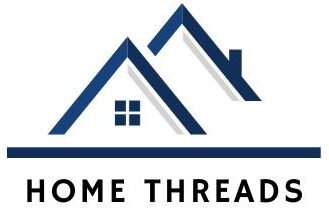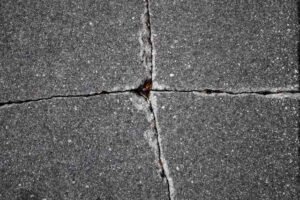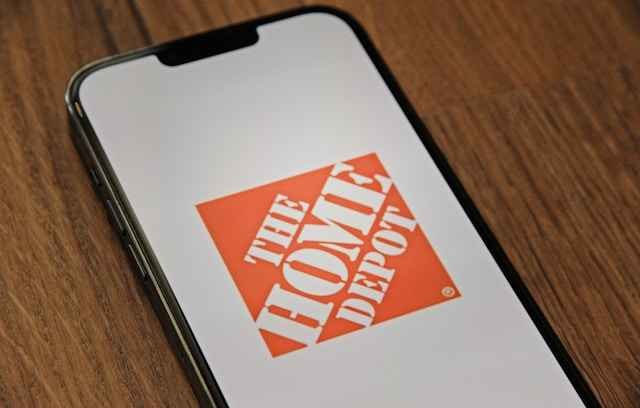Recessed access doors give you access to mechanical, electrical, and plumbing systems without interrupting a building’s clean lines. They combine durability, safety, and ease of service into one product.
In addition to their primary function, recessed access doors also provide unmatched aesthetic benefits. They can be finished with the same material as the surrounding wall, making them virtually invisible once installed.
This translates to better aesthetics and fewer last-minute corrections for commercial contractors and project managers. Let’s break down the advantages of recessed panels and how they improve construction project efficiency.
Why Are Recessed Access Doors Popular in Commercial Construction?
Improve Aesthetics and Site Safety
Since recessed access doors sit flush and conceal their hardware, they preserve a building’s finished look and remove trip-and-snag hazards.
Recessed units have an inlay panel that can be filled with drywall, tile, or other finishes. This allows architects and owners to maintain clean, consistent finishes while ensuring easy access. Visual flow is especially important in public-facing spaces like lobbies, retail stores, and high-end hotels.
Flush installation also eliminates protruding frames or handles typically found in surface-mounted panels. Such protrusions pose snag hazards, leading to minor accidents and future maintenance issues. By removing them, these flush panels ensure safe access during routine maintenance, especially in high-traffic areas.
Increase Commercial Construction Efficiency
Recessed access doors speed installation and reduce rework, boosting commercial construction efficiency.
Most come pre-framed to fit easily into walls and standard stud and ceiling systems. That reduces cutting, trimming, patching, and touch-ups on site. Contractors save labor hours during the finishing phases because the door perfectly aligns with surrounding materials.
Fewer field adjustments mean fewer order changes and faster progress on tight schedules.
Support Faster, Safer Facility Maintenance
Access doors and panels simplify routine inspections. They open cleanly, seal securely, and protect equipment over time, lowering lifecycle costs. Speed is key for commercial building maintenance teams because delays could mean downtime.
Recessed access doors offer easy, hidden access to valves, junctions, or controls, allowing technicians to finish inspections and repairs faster. This means businesses can continue running uninterrupted.
As far as safety goes, many recessed models accept tamper-resistant latches and key-operated locks that can be valuable in areas where restricting access is necessary like mechanical rooms.
Overall, recessed access doors keep utilities safely hidden away while helping facility managers maintain regular maintenance routines.
Deliver Long-Term Cost Savings
Recessed access doors reduce repair time, lower finish rework, and protect equipment—all benefits that translate into long-term cost savings.
Savings in labor, materials, and fewer emergency repairs typically offset the upfront cost for a quality recessed unit. Because recessed installations reduce damage to surrounding finishes, owners avoid expensive post-construction fixes.
Over a building’s life, reduced maintenance time and fewer tenant disruption events save on repair costs and revenue for tenants.
How Do Recessed Access Doors Compare To Surface-Mounted Doors?
Visual continuity and hidden access are two top qualities that set recessed access doors apart from their traditional counterparts.
Surface-mounted doors can be quicker to fit but often require visible frames and trim. They’re simpler in some retrofit scenarios but leave a visible frame that may conflict with an architect’s design.
Recessed access doors, by contrast, keep finishes continuous and are less likely to be bumped, painted over, or damaged. They’re often the preferred choice for projects where hidden access panels and subtlety are priorities (high-end retail, healthcare, hospitality).
What Factors Determine Whether a Recessed Access Door Works as Intended?
When choosing recessed access doors, the depth, finish compatibility, and placement details determine whether the panel blends seamlessly or creates problems later.
- Frame Depth and Recess Alignment: Ensure the frame depth matches the wall or ceiling assembly. If the recess is too shallow or deep, the inlay won’t sit flush, leaving gaps that require extra patching. This is especially important when working with thicker materials like stone veneer or multi-layer drywall.
- Inlay Compatibility With Finishes: Select recessed doors that accept the right inlay panel—for example, drywall inlays for standard partitions or heavier-duty models designed to hold tile or plaster. Choosing the wrong type can cause sagging, cracking, or misaligned joints.
- Placement and Application: Recessed access doors are most valuable in high-visibility or design-sensitive areas, but they don’t all serve the same purpose. For example, a drywall-inlay recessed panel is ideal for painted partitions, while a tile-ready recessed unit with ceramic or stone finishes works better in restrooms or kitchens.
- Code-Driven Performance: Fire-rating is necessary in egress corridors or areas where codes demand containment. Don’t assume all recessed doors meet these requirements. Always check listings and certifications.
- Installation Considerations: Recessed panels only sit flush if the rough opening is framed and sized correctly. Even small misalignments can leave the door uneven and create extra finishing work.
Where Do Recessed Access Doors Add the Most Operational Value?
Use recessed doors anywhere you need discreet, repeated access. Common high-value placements include:
- Above ceiling service corridors.
- Behind cabinetry in retail spaces for clearance.
- In corridor walls near mechanical hubs.
- In sterile zones like hospitals, where flush surfaces help infection-control protocols.
- In data centers and telecom closets, tidy access panels reduce cable snagging.
Thinking through the application by space type makes it easy to pick the right product and avoid over- or under-specifying units.
Conclusion
Recessed access doors may look like a small spec, but they offer big advantages. From better finishes and easier maintenance to long-term cost savings, these panels help contractors deliver high-value builds.
They are a practical tool for improving commercial construction efficiency while delivering access door benefits that matter to owners and facility maintenance teams.
Recessed units pay back in fewer reworks and lower lifecycle costs when you coordinate the right product and finish up front.







